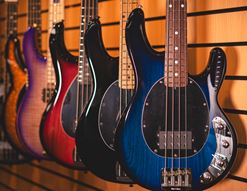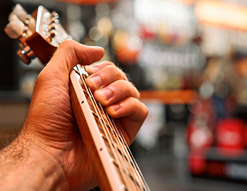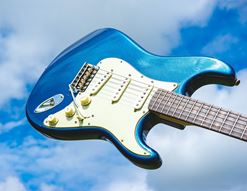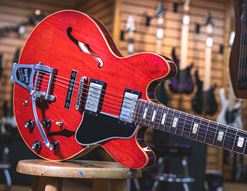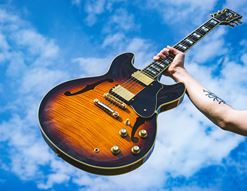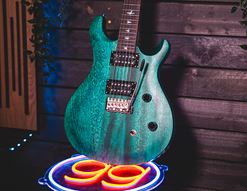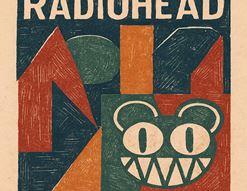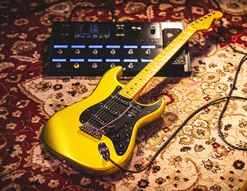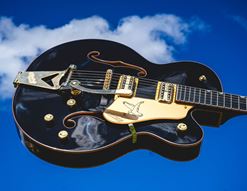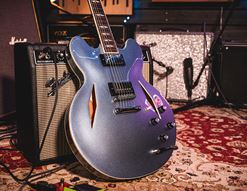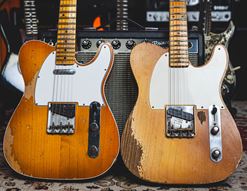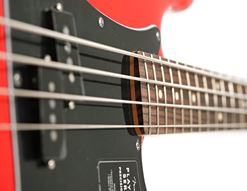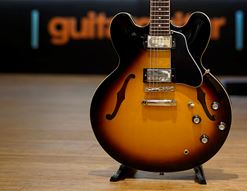What is a traditional guitar? What is a contemporary guitar? Am I talking ‘new’ and ‘old’?
Not really, no. What I aim to discuss today is the difference between classic electric guitars that were largely designed in the 1950s, and the new breed of instrument that gets used in some of the more extreme ends of modern music today. How has electric guitar design changed in the ¾ of a century since they became a mainstream consideration?
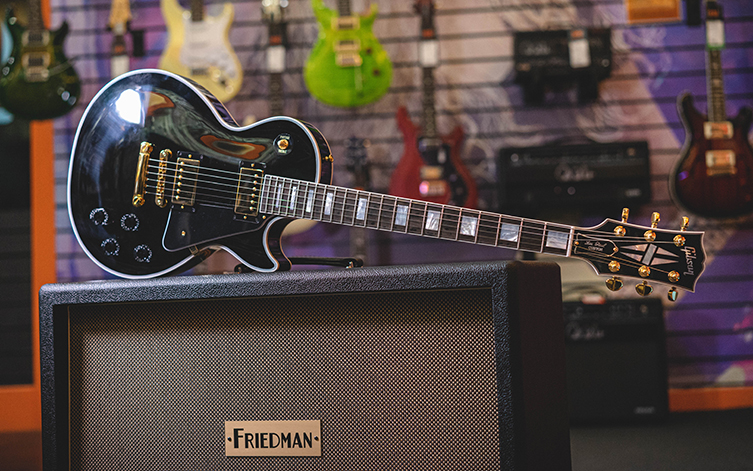
This is something I want to ponder a little today.
Chapters
What is a Contemporary Guitar?
Who Are Traditional Electric Guitars For?
Who Are Contemporary Electric Guitars For?
What is a Traditional Guitar?
- The classic world-famous designs that we all know and love
- Golden Age guitars from 7 decades ago, still going strong
We tend to be a traditional lot, us guitarists. Aren’t we? Considering how wild and expressive sounding our chosen instrument is, many of us don’t tend to take too many risks when it comes to choosing which models we play. The guitar designs from the 1950s - which is 70 years ago, folks - remain largely what we use today.
Now, this is no judgement, because I’m no different! My main guitar choices lie about 50/50 between the traditional camp and the contemporary camp. I suppose I can see things from both sides, to a degree, so maybe I’m in a good position to understand and express why some players like the futuristic newness, and why others prefer the ‘good old’ stuff.
But first, what do I even mean by ‘traditional guitars’ and ‘contemporary guitars?
Traditional guitars, from my point of view, are all of the ones you’d expect. I’m talking about these guys:
- Fender Stratocaster
- Gibson Les Paul
- Fender Telecaster
- Gibson SG
- Fender Offsets (Jaguar, Jazzmaster and their siblings)
- Gibson ES-335
- Gretsch
- Rickenbacker
- Gibson ‘Shapes’ (Flying V, Explorer, Firebird)
There are more, but you get the picture. All of the guitars that you see being played by Hendrix, The Beatles, Led Zeppelin and all of those huge bands from ‘back then’. You can include any of the other classic-era axes you feel like (Danelectros and so on), but that’s the general thrust of what I’d consider to be a ‘traditional’ electric guitar.
Almost all of these are still in regular production too, because they are perennially popular with players. Whether your Strat is a 50s reissue model or a ‘tricked up’ Ultra II model, I’d say that Strats belong in the traditional camp. This goes for all ‘revised’ versions of the classics.
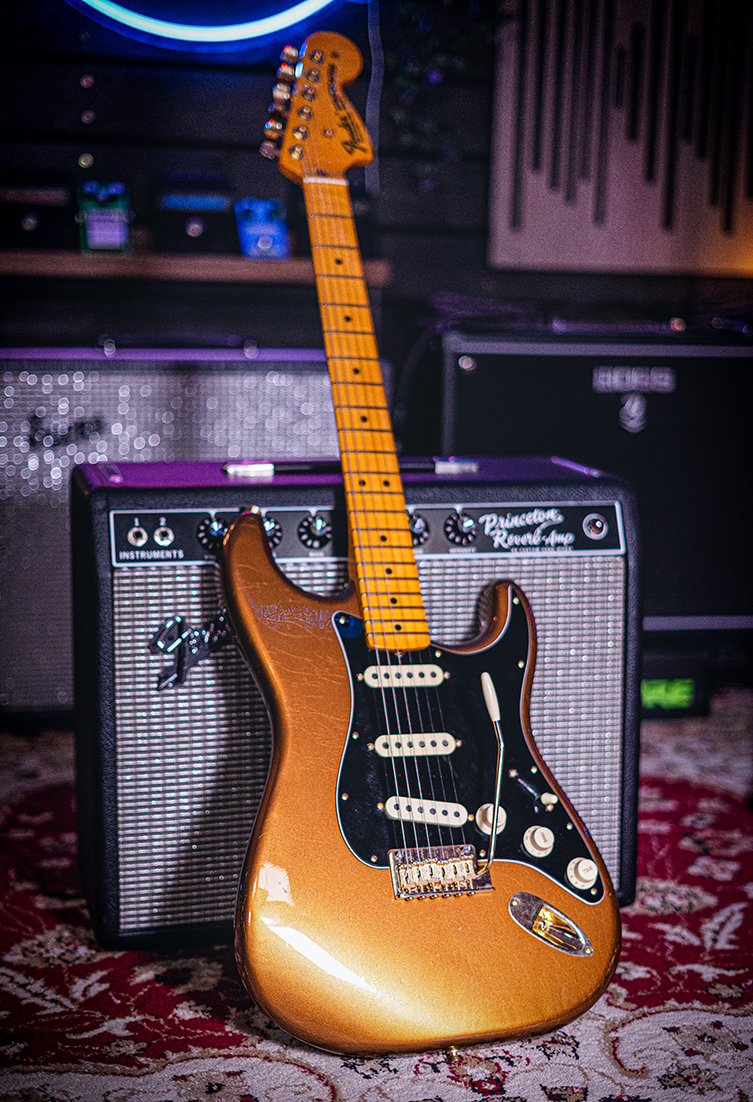
What is a Contemporary Guitar?
- Futuristic designs that work and are popular
- New avenues for the guitar to go down
- These can still be deceptively old!
So what, then, is a contemporary guitar? I suppose it depends on how far you want to go, and whether any technological advancements have themselves stood the test of time. Are the guitars even available today? These are good questions to ask!
Something like the Parker Fly - ubiquitous in the mid 90s guitar magazines - certainly qualifies as ‘contemporary’ thanks to its futuristic design and innovative build, but Parker have long since stopped building guitars, so they’ve become something of a curio for fans of a certain time period, almost like vintage guitars. Hardly cutting edge news for 2025 even if they are technically still highly innovative.
This is also true of guitars like the Casio MIDI guitar from the 80s, another future-forward concept that didn’t land with guitar players in a big way. Same for the Bond Electraglide with its stepped aluminium fingerboard that didn’t require frets.
What were they smoking?
Some concepts that were unorthodox back in the day - and even somewhat ridiculed - have come full circle, and are now not only accepted but celebrated as exciting, fresh ways to look at the electric guitar. These are types that spring to mind…
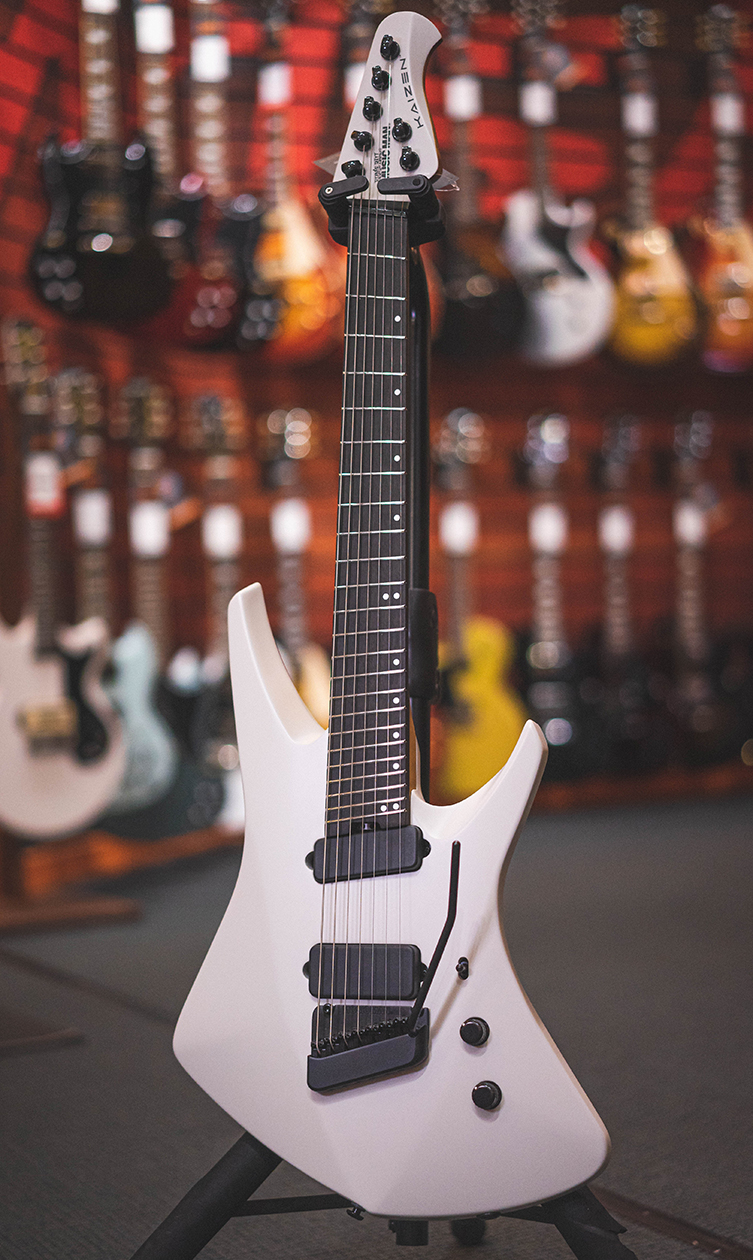
Extended Range Guitars
- More strings for today’s heavier styles
- 7 and 8 strings no longer a niche proposition
7, 8 and even 9 string guitars are more or less a normal thing nowadays. When Uli Jon Roth unveiled his 7 string Sky guitar, the world was perplexed. When Steve Vai collaborated with Ibanez for the 7 string Universe, the world paid attention for a while, but didn’t know what to do with it until Korn paved the way for Nu-metal’s adoption of the instrument. Nowadays, a high percentage of metal and jazz players have at least one extended range guitar in their arsenal.
Extended range guitars began life utilising the same scale length as their 6-string cousins. The Ibanez Universe and similar guitars from the 90s tended to have a 25.5” scale length, but as tunings went lower and lower, a longer scale length was required to maintain string tension and get notes sounding tight.
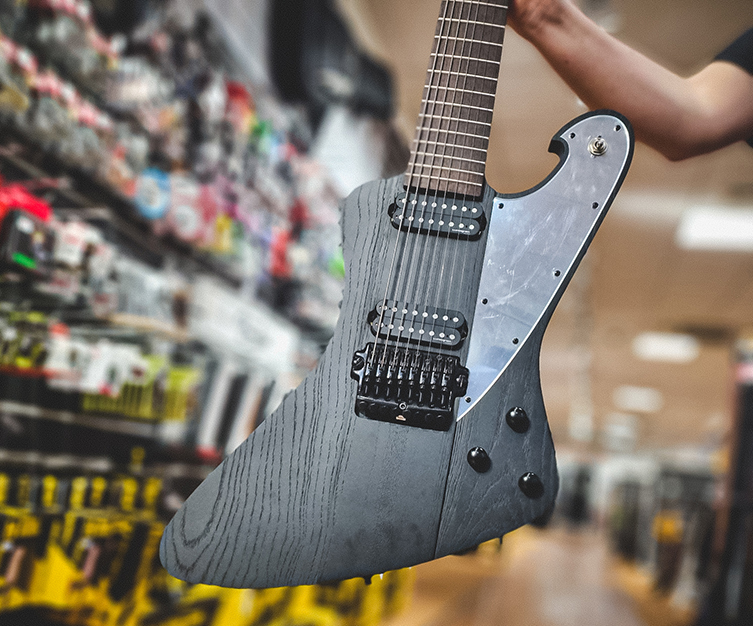
This brought back the concept of longer ‘Baritone’ scale lengths, which was actually something from the 50s and 60s that had long since fallen out of favour. Baritone necks can vary in length but aren’t usually less than 27” in scale. Baritone necks can be as long as 30.5” - longer than a short scale bass - but mostly live between 26” and 28” on today’s guitars.
This leads us into another modern development: the multiscale…
Multiscale
- Sound in tune no matter how low you’re tuned
- Improved intonation across the fingerboard
Multiscale guitars are a genuine step forward for at least the engineering side of guitar building. If you’ve seen a guitar with slanted frets and matching angled hardware, then you’ll have seen a multiscale guitar.
But what is it all about? Put simply, 7 and 8 string guitars are often a compromise in feel. In order for the lower strings (which are often tuned to a Low E, just like a bass) to intone properly, a longer scale length is needed. But that longer scale length makes the regular E, B and G strings feel tight and uncomfortable, stretched over that longer playing space.
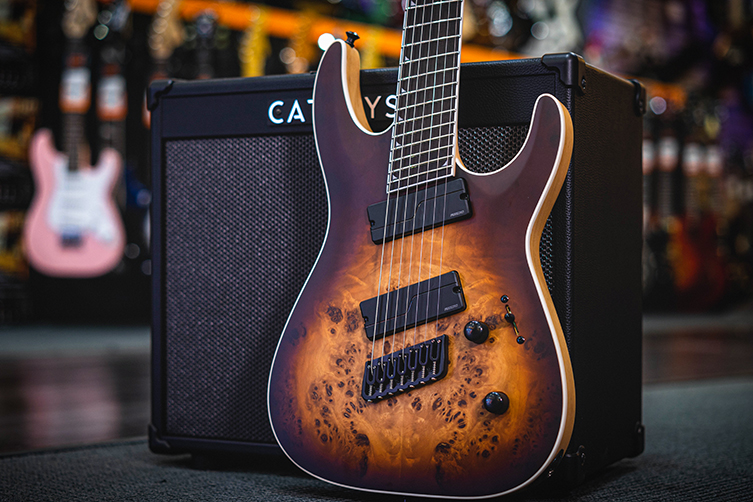
What to do? The answer is to have two completely different scale lengths within one neck: one for the top strings and another longer one for those at the bottom. The frets are fanned in order to accommodate both scale lengths, and the pickups are angled to make the most of the treble and bass frequencies. The bridges on multiscale guitars are often made with individual parts for each saddle, so that no compromises need to be made for string length when setting intonation.
The short take is: multiscale guitars can sound super low without ‘boinging’ out of tune and sounding pitchy.
Headless guitars
- Contemporary even though they are from the 70s
- Instantly futuristic
- More popular than ever
- Tune at the bridge, since there’s no headstock
Back in the late 70s and early 80s, Steinberger were the pioneers of the headless guitar. Defiantly futuristic, Steinberger guitars and basses lost not only the headstock but much of the body wood too, leading many to refer to them as ‘cricket bats’. Simultaneously ahead of their date and strongly dated to their inception time, Steinberger were and are marmite choices. Many guitarists - even dyed-in-the-wool traditionalists - can’t fault Steinberger as being perfect travelling buddies, not least for their rigorously effective tuning stability in addition to their portable size.
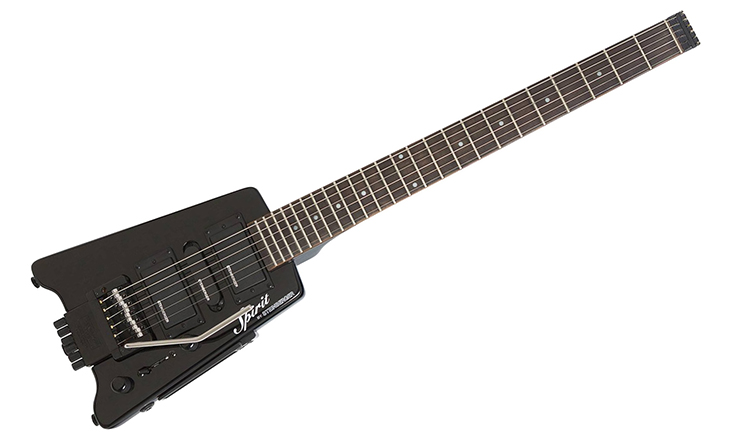
That’s just one brand though, and though they are still happily in production, Steinberger are not really at the forefront of today’s contemporary guitar scene. I’d say that Swedish brand Strandberg are the spearheads of the current headless revolution, so to speak. Strandberg have captivated fans of innovation with their patented Endurneck design, a squared neck profile that actually relieves hand fatigue.
Strandberg have re-introduced headless designs but allowed their guitars to have bodies, though these are not typical Strat or Les Paul-alikes. Ergonomics is the main concern here, and guitars like the Boden and the Salen are entirely fresh silhouettes in the guitar game.
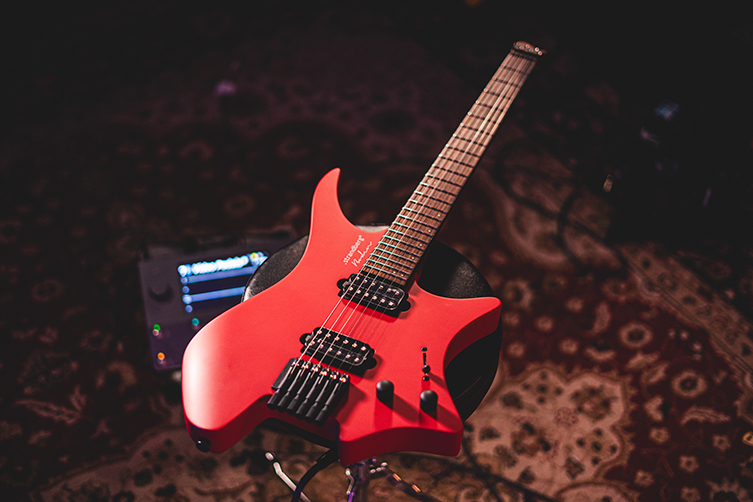
Added to this are extended range features (7 & 8 strings, multiscales etc) such as we saw earlier, so it seems that Strandberg are as futuristic as it gets!
Other brands have followed suit. Comparable brands include:
- Eart
- Ormsby
- Legator
- Ibanez Q Series
- Mayones
- Cort
Combining Elements
One thing that seems fairly clear to me is this: players who like innovative features are happy to have lots of them featured within the same instrument. For example, lots of today’s headless guitars are also multiscale. Most of these are also extended range in terms of string numbers too, so it's perfectly normal these days to see an 8 string headless multiscale guitar!
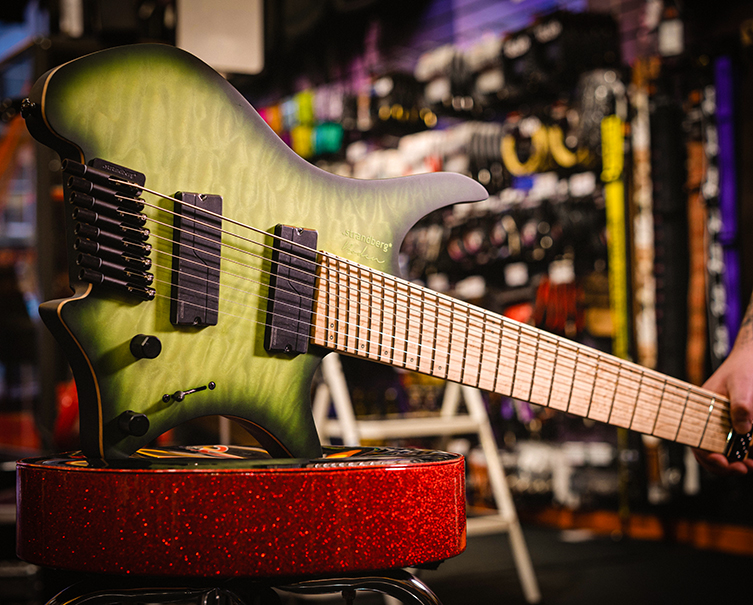
Worlds Don’t Collide
What we are seeing from the heritage brands is that they don’t want to move too far away from their primary offerings in terms of incorporating contemporary features. This is something I absolutely understand: players seem to want either vintage authenticity or contemporary performance. Hitting the nail in between is a difficult and hazardous process.
There are certain brands - PRS and Music Man spring to mind - who are able to find this median ground and offer instruments that play to the heritage fans and future-forward players alike, but these brands are themselves 40 and 50 years old now, so can they be seen as contemporary?
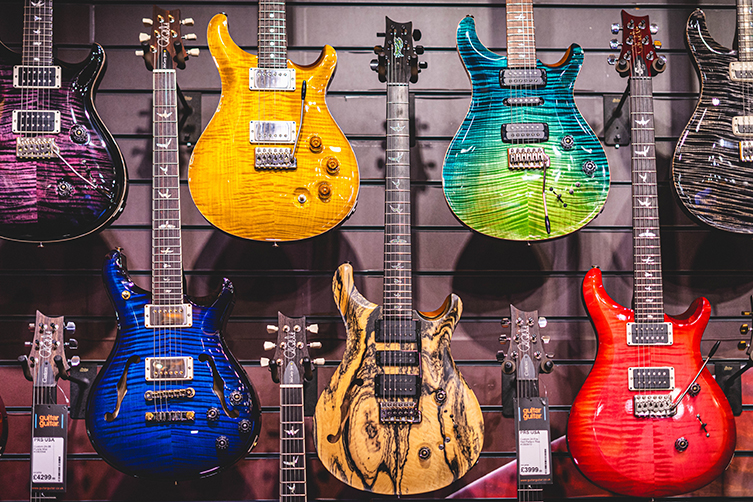
In truth, a modern prog metal guitarist who plays an 8 string Strandberg is perhaps not the target market for a Murphy Lab ES335, not that I want to make assumptions! But players often also buy guitars for certain jobs, and so they don’t want their headless multiscale to resemble an old Fender, and vice versa. Different needs and moods will dictate choices in that regard.
Who Are Traditional Electric Guitars For?
This is easy to answer: the classic electric guitars of the world - the Strats, SGs, Teles, Les Pauls and ES335s - are for us all. The history of electric guitar music has been made largely with these designs. They are timeless, stylish and able to be used in a rich variety of musical situations.
Whether you play blues, jazz, rock, metal, indie, shoegaze, trad, pop or funk, you’ll be able to choose the perfect guitar for you from the large selection of traditional guitars that are still very much being made today.
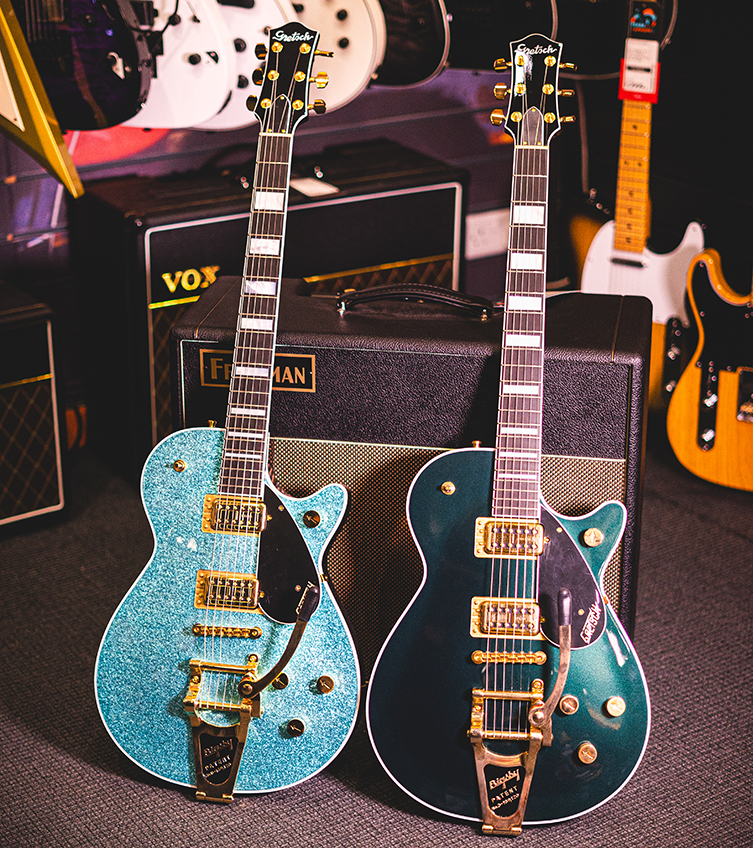
Who Are Contemporary Electric Guitars For?
Given that most of electric guitar history has been created and recorded using classic axes like the Les Paul and the Tele, who then are the more contemporary guitar designs for?
Well, the last decade or so has seen a huge amount of advances in the art of electric guitar. Just when you think you’ve heard it all, somebody like Tosin Abasi or Tim Henson comes along and rewrites the rulebook for everybody.
This new generation of guitar hero needs their own style of instrument that isn’t handed down from generation to generation, and that’s perhaps why the likes of Strandberg, Ormsby and Legator are proving popular.
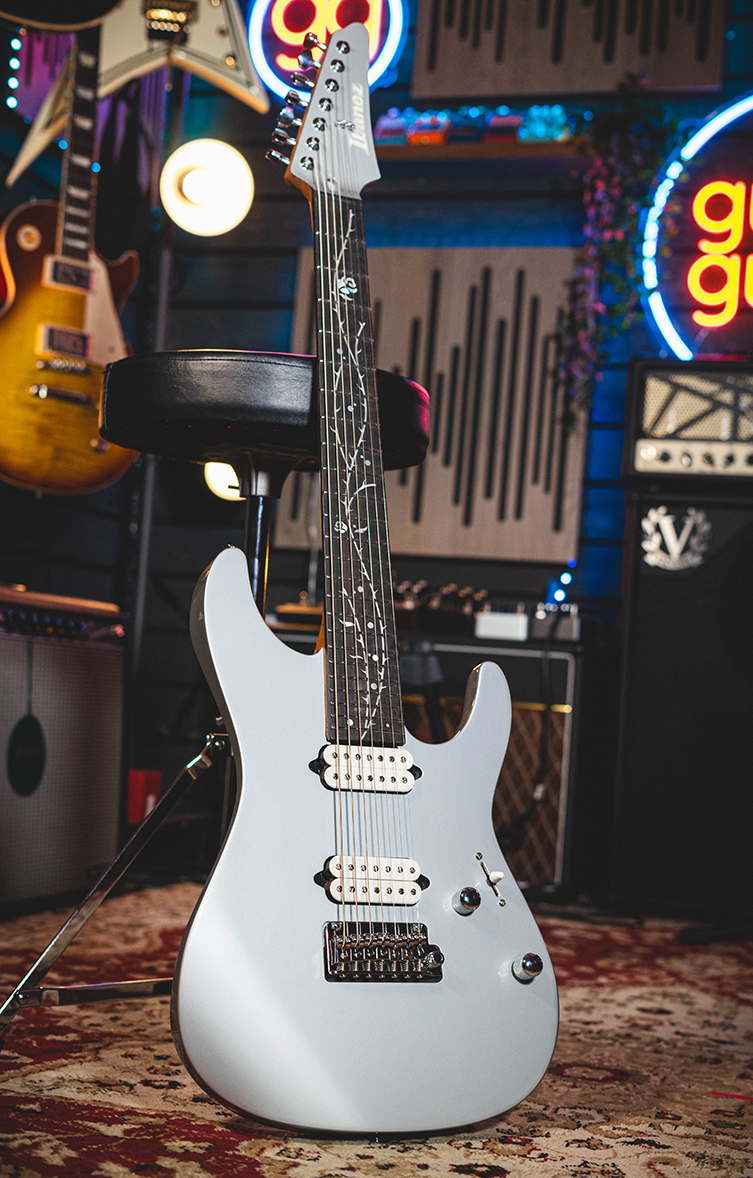
Choose Your Side
What I believe is important to keep in mind here, is that you do not need to pick a side and stay there. Why should you? I’d say it’s perfectly reasonable and practical to own instruments that belong in both camps. That way, you can focus on a style and vibe, and then transfer across to a very different style when the mood takes you.
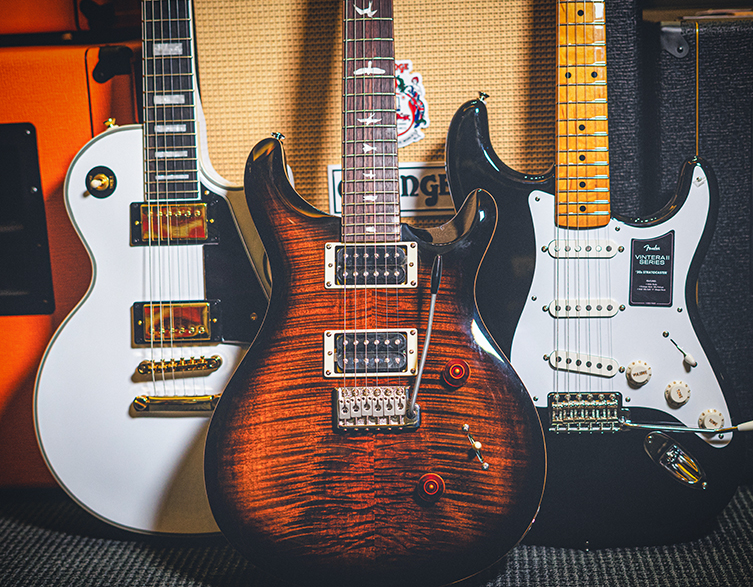
Whilst I’m fully understanding of the notion that you can play anything on anything - any style on any guitar - certain features and specifications do make certain jobs easier to execute. Aesthetics are a big deal to us all as well, and having the ability to select different styles, looks, sounds and feels can really open up our guitar playing in new ways.
So are you a traditional guitar fan? Or a Contemporary player? Or both? That’s up to you!

